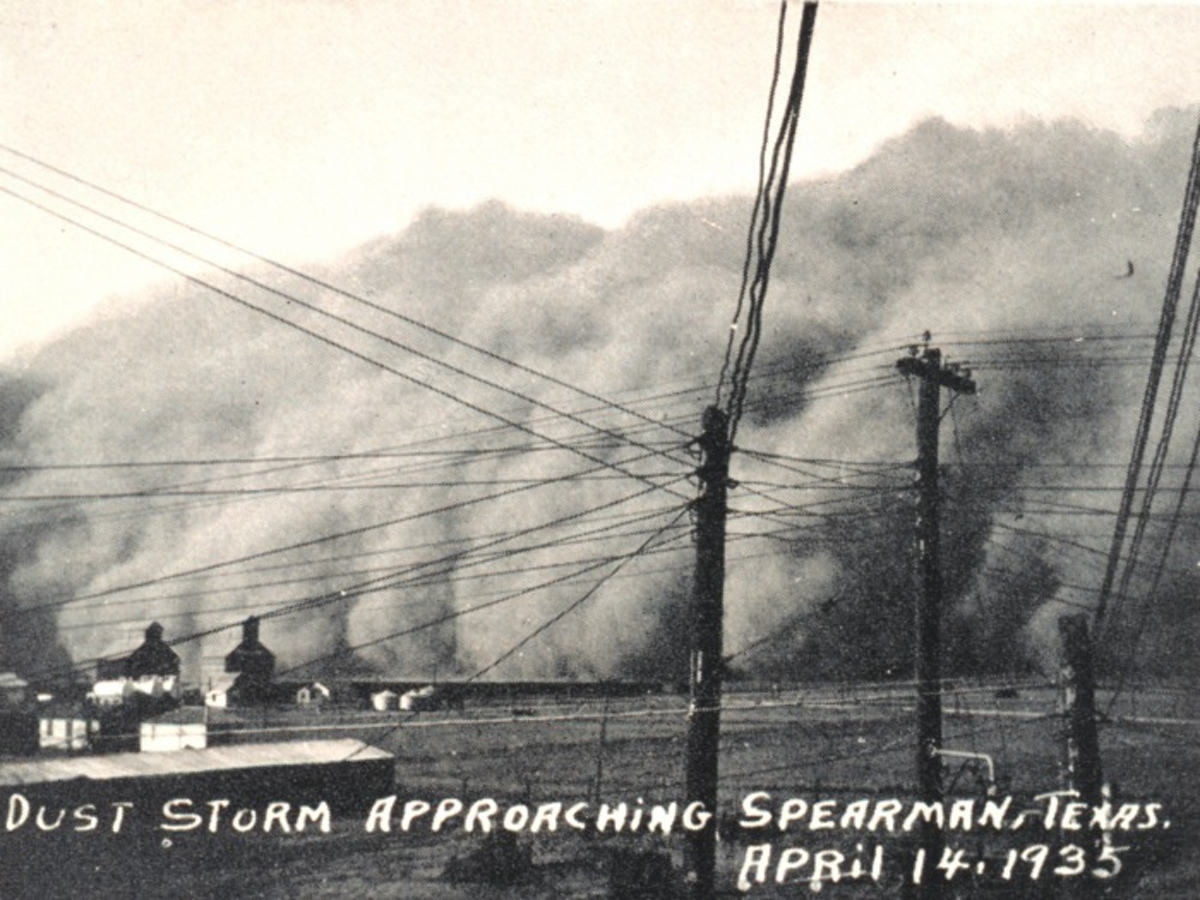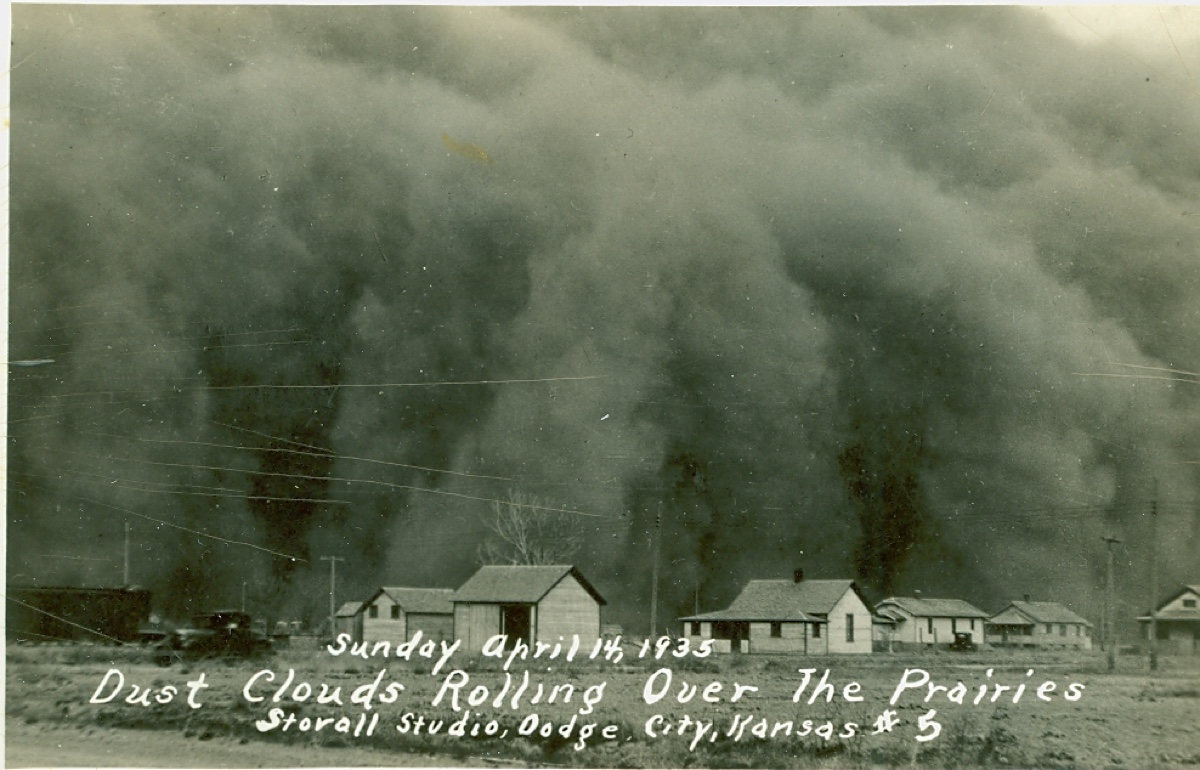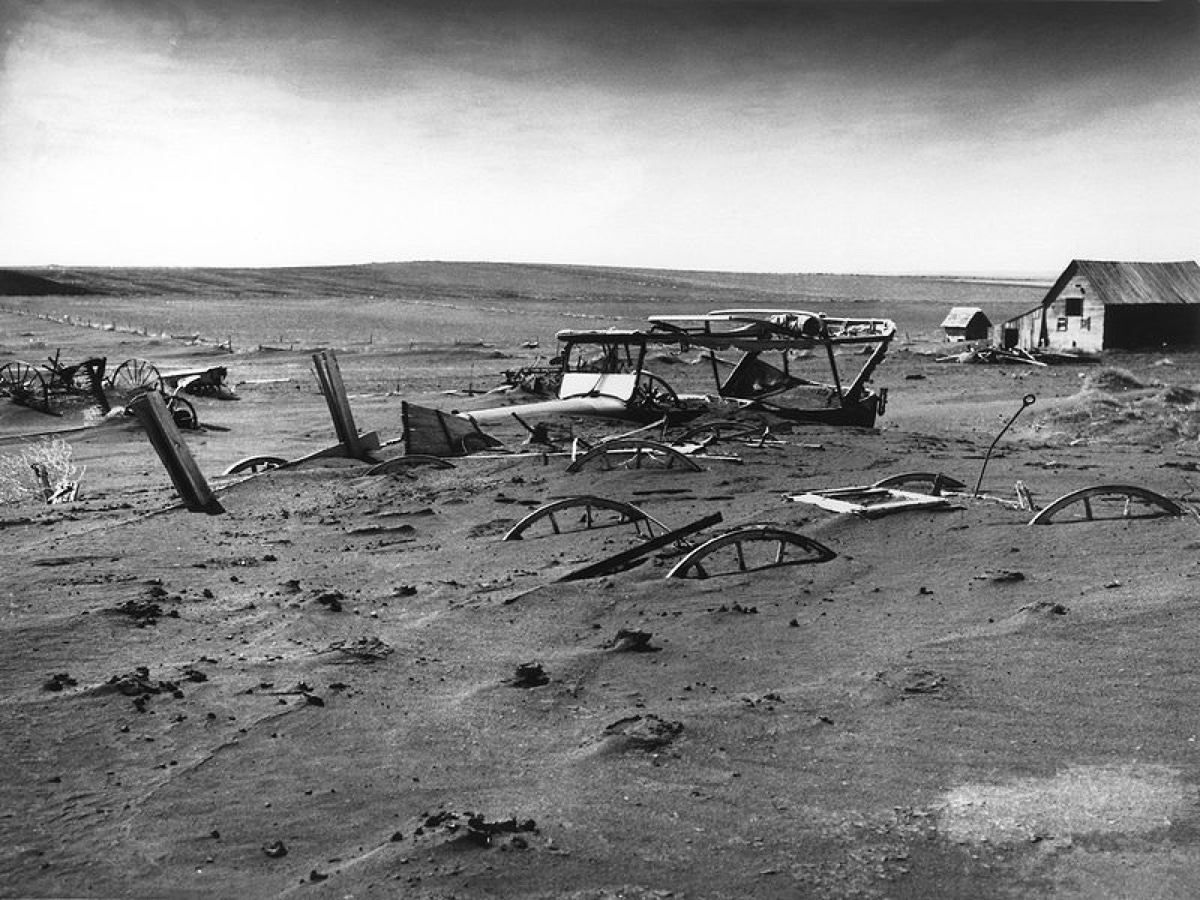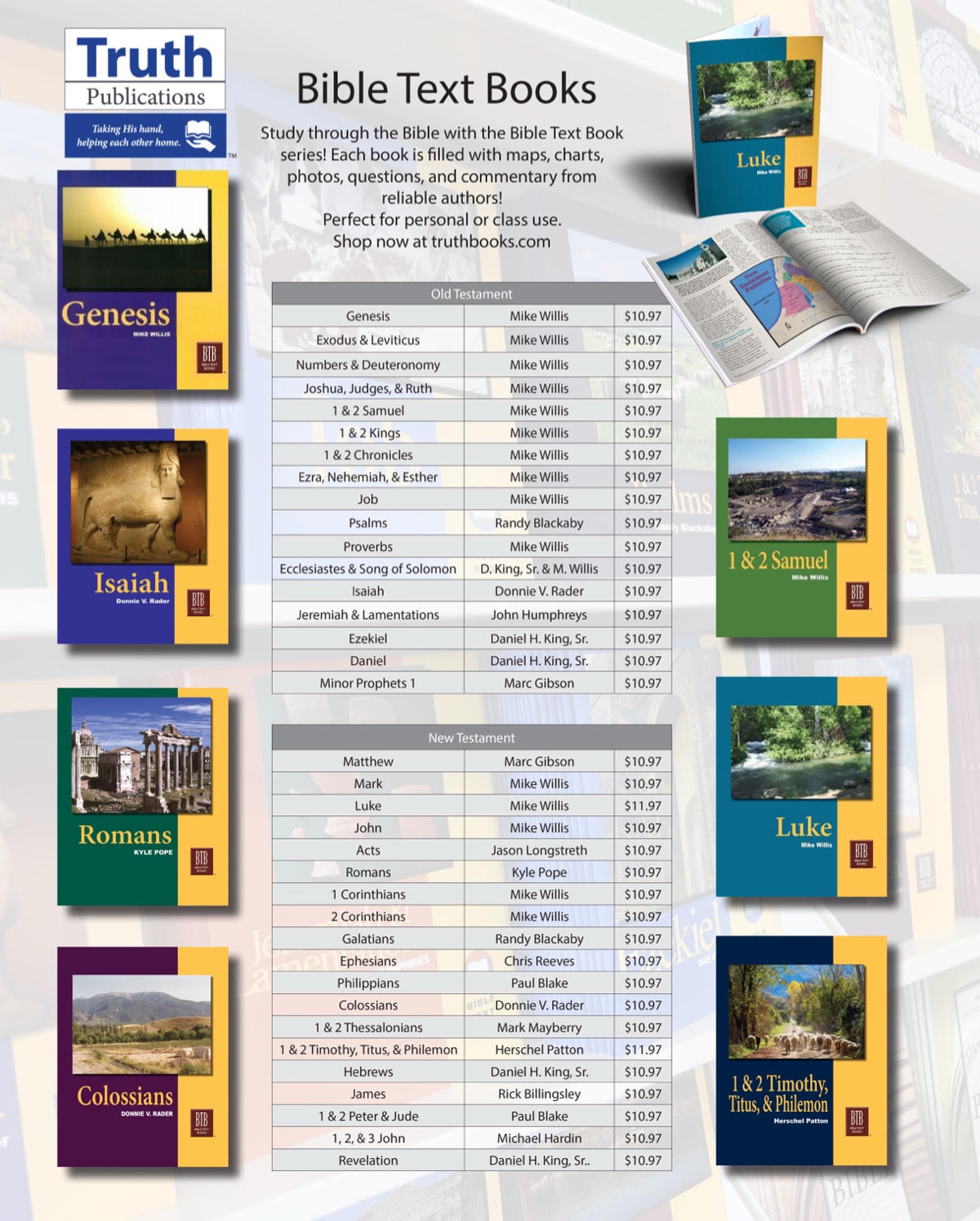By Kyle Pope
Synopsis: While one can easily become discouraged by personal struggles or societal ills, let us avoid idealizing the past and despairing over the future, but seek to live in the present with faith, hope, and love (1 Cor. 13:13).
For many of us, the times in which we live look pretty dark. Troubles of all sorts seem to surround us at every turn. It’s easy to look at some point in the past and say, “Why were the former days better than these?” While these words come from Ecclesiastes 7:10, they are prefaced with the command, “Do not say” and followed by the instruction from the Preacher, “For you do not inquire wisely concerning this” (NKJV).
Eighty-seven years ago, things in Amarillo, Texas, where I preach, seemed pretty dark to the residents of this city. Following World War I, wheat production in the United States soared. This was in response to blockades imposed upon Russian wheat. In the Great Plains region, spanning from Montana to Texas, the federal government had encouraged farmers to plow up the native Buffalo Grass and plant wheat crops. For a decade this flourished. Small farmers made good profits and new landowners imagined good times ahead for their crops and families.
Then two things that happened changed everything. On October 24, 1929, which came to be called “Black Thursday,” Wall Street experienced the largest sell-off of stocks in US history. Five days later, on “Black Tuesday,” 16 million shares were sold on the New York Stock Exchange in a single day. This “Great Crash” of Wall Street began an economic depression that spanned a decade. Initially, it had little impact on wheat farmers in the plains, but eventually it caused wheat prices to collapse. Just as that was beginning to affect the Great Plains, a second event added to the problem. Three intense waves of drought hit the region in 1934, 1936, and 1939-40. Over the decade, rainfall in some areas fell to half the yearly average, with 50-60 inches of rain that normally would have been expected never coming to water the crops.
This triggered an unexpected consequence of plowing up the wild native grasses. Buffalo Grass has a deep root system that is well suited for wet and dry cycles. Wheat has a shallow root system. When it couldn’t grow, the topsoil had nothing to hold it in place. Beginning in 1931, winds randomly generated massive walls of dirt, dust, and sand that swept through the plains, displacing tons of farmland as they passed. By 1934, 35 million acres of farmland could no longer be cultivated. Eventually, an area three-quarters the size of Texas became unsuitable for farming. The heart of this devastation was in an area of the Texas and Oklahoma panhandles, including portions of New Mexico, Colorado, and Kansas that came to be known as the “Dust Bowl.”
In 1935, these walls of dust called “Black Blizzards” hit Amarillo seven times, turning daylight into darkness. One was especially severe. It would come to be called “Black Sunday.” It hit Amarillo on Sunday, April 14, 1935 around 7:20 p.m., just as some were leaving church. A storm moving at 50-60 mph stretched from Oklahoma City to the Arizona border and traveled in different intensity from the Dakotas to the Rio Grande. The next day, the Amarillo paper reported that it had been 8,000 feet high. Flocks of birds had fled from it as it moved, and small birds lay dead after it had passed. It was so dark that people could not see their hands in front of their own faces. To the west, as it passed, the sun shining through the dust made it look like fire in the clouds of dust. Many thought the end of the world had come.
When everything was over, it wasn’t the end of the world, but over a quarter of an inch of dust filled closed houses and stores. Outside, there were drifts of dust and sand as high as 15 feet in some areas. Over the entire Great Plains, the storm had displaced 300,000 tons of topsoil. These conditions from 1930-40 left half a million people homeless. Families lost their homes, farms, and some took their own lives in hopeless desperation. By 1940, 2.5 million people who had flocked to the plains with such great hopes and dreams were forced to move away. Those were dark times indeed!
Why would the Preacher of Ecclesiastes say that asking why the “former days” were better is unwise? Perhaps for several reasons:
Those who lived through the “Dust Bowl” faced a horrible time, but their “former days” had seen World War I, “the war to end all wars,” and the Spanish Flu. As the “Dust Bowl” ended, American involvement in World War II began, leading to an economic expansion that continued for decades. When were their “better” days? The attitude expressed in Ecclesiastes 7:10 forgets the challenges of the past and doesn’t realistically consider the full picture of the present. The Psalmist declared, “This is the day which the LORD has made; let us rejoice and be glad in it” (Ps. 118:24, NASB).
The word “better” is a relative term. It depends on what is being compared. The Holy Spirit illustrates this in Proverbs: “Better is a dry morsel and quietness with it than a house full of feasting with strife” (Prov. 17:1, NKJV); “Better is a little with righteousness than great income with injustice” (Prov. 16:18). A dry morsel isn’t good and having too little isn’t good, but injustice and strife are worse than both. To say the past was “better” draws an invalid comparison. It compares some pleasant thing we remember (or imagine) from the past with some unpleasant thing in the present (without considering everything in the present).
Paul taught that the disciple of Christ should “look out not only for his own interests but also for the interests of others” (Phil. 2:4). The mindset of Ecclesiastes 7:10 doesn’t do that. It’s all about how I feel. If things aren’t going well for me, I assume life is just as horrible for everyone else. If I look fondly to some golden age of the past, I assume that everyone else must see it the same way. What about the convert to Christ? His “former days” were days of sin and separation from God. Was that “better” for such dear souls? What about the young? Everything lies ahead of them. Do we rob them of their joys of the present and their dreams of the future by our skewed perspective on an idealized view of the past? Love “does not seek its own” (1 Cor. 13:5).
The “Dust Bowl” was one of the worst manmade environmental disasters in history—but there were also good things that came out of it. Many lessons were learned that have helped succeeding generations avoid repeating it. My mother was born the year “Black Sunday” hit Amarillo. That was a good thing! Any point in time has “enough trouble of its own.” That’s why Jesus teaches that we should “not worry about tomorrow, for tomorrow will worry about itself” (Matt. 6:34, NIV). In Ecclesiastes 5, the Preacher affirms that God gives man “riches and wealth” and “power to eat of it” as a “gift of God” (5:19) so that “he will not dwell unduly on the days of his life, because God keeps him busy with the joy of his heart” (5:20, NKJV). Seeing the past as “better” ignores the good things all around us that God has given to busy us with joys within our hearts.
The rains returned to the Great Plains and the droughts of the “Dust Bowl” came to an end. Amarillo is still a dry and windy place, but driving through the city you would never know that a day like “Black Sunday” once descended upon it. Last Spring a dust storm blew through town. It was hazy, and the sun was obscured for a while like you might see during a mild rainstorm, but it passed quickly. No matter how bad things get, things will probably improve with time. No matter how difficult life may be, there are still reasons to “rejoice in the Lord always” (Phil. 4:4a). Christians can know, no matter how dark things become, “our salvation is nearer than when we first believed” (Rom. 13:11b). May we cling to that hope through any “Black Sunday” life throws our way.

Caption: The “Black Sunday” dust storm approaches Spearman in northern Texas, April 14, 1935.
Source: “Black Sunday (storm).” Wikipedia. https://en.wikipedia.org/wiki/Black_Sunday_(storm)#/media/File:Wea01422.jpg

Caption: “Dust Clouds Rolling Over the Pairies.” Image courtesy of Don Hahn.
Source: “85th Anniversary of April 1935 Dust Storm (Black Sunday).” National Weather Service (NOAA). https://www.weather.gov/ddc/BlackSunday1935

Caption: “Buried machinery in a barn lot in Dallas, South Dakota”
Source: “85th Anniversary of April 1935 Dust Storm (Black Sunday).” National Weather Service (NOAA). https://www.weather.gov/ddc/BlackSunday1935

